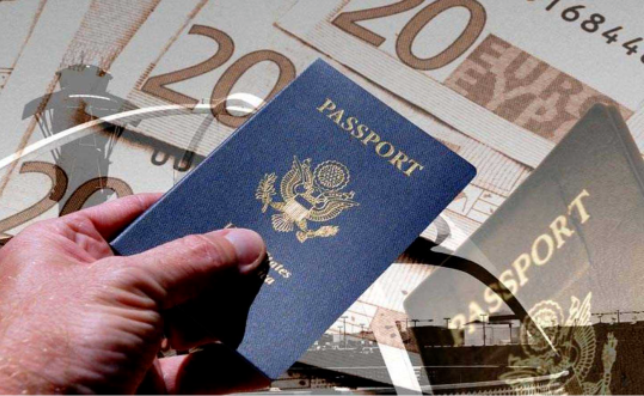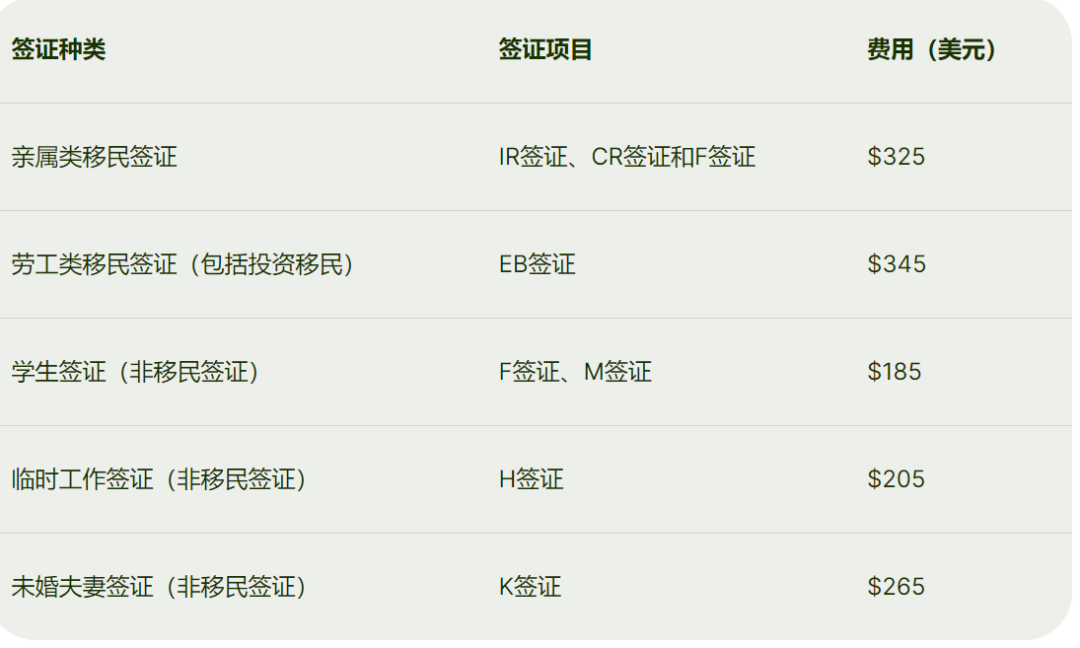- Remittance
- Exchange Rate
- Stock
- Events
- EasyCard
- More
- Download
US Immigration | Requirements for immigrating to US and common ways of cross-border remittance

As a popular immigration country, the US has attracted middle-class and highly educated professionals from all over the world. For those seeking investment immigration, the US EB-5 visa can achieve family immigration for as little as $500,000. Highly educated talents can enter the US by applying for an H1-B temporary work visa and then convert to an EB immigration visa. For those who are worried about employment prospects, they can study at a US university and take university courses with an F visa. This not only accumulates valuable social resources, but also makes it easier to find their ideal job after graduation. Of course, if there are direct US relatives, it is even simpler. They only need to wait in line to apply for an IR or F visa to easily obtain a green card.
This article is a guide to US immigration, introducing the five most popular ways to immigrate to the US, and explaining in detail the application qualifications and fees for each type of immigration. In the immigration application process, it involves paying various fees to the US, so it is crucial to understand different remittance methods. In the article, we will briefly introduce several common remittance methods for reference.
Skilled migrants
The labor immigration visa consists of five categories, the first four of which are typical skilled immigrants, while the fifth category is investment immigration, as detailed below.
Holders of labor-class immigration visas can apply for accompanying or subsequent immigration to the United States with their spouses and children. Generally, applicants for skilled immigration must hold a labor certificate and submit an immigration application through a US employer. However, there are exceptions: applicants for the first category of E1 visas (US Outstanding Talent Immigration) and E4 visas (Special Occupation Immigration) can submit immigration applications on their own.
Investment immigration
The investment immigration visa is applicable to foreign investors who make capital investments in new US companies to create job opportunities. It is divided into two types of investments: within and outside the “target employment area” (high unemployment rate or rural areas). Investment immigrants do not need labor certificates and can submit immigration applications on their own. Spouses and unmarried children under 21 years old can also apply together.
Visa sub-categories:
Creating jobs in high unemployment or rural areas - T5
Creating job opportunities outside the target employment area - C5
Pilot Program for Investors in High Unemployment or Rural Areas - I5
Pilot Program for Investors Outside Target Employment Areas - R5
Family immigration
There are two types of visas for family-based immigrants, namely “immediate family” and “family priority”. The former has no quota restrictions and can apply for permanent residency without any waiting time. In addition to the immigration visas introduced below, there is also the K-1 unmarried couple visa. Applicants must marry a US citizen within 90 days of arriving in the US, and then they can apply for permanent residency.
“Direct relatives” include the following categories:
IR-1: Spouse of a US citizen
IR-2: Unmarried children under 21 of US citizens
IR-3: Orphans adopted by US citizens abroad
IR-4: Orphans adopted by US citizens in the US
IR-5: Parents of US citizens over 21 years old
"Family First" includes the following categories :
F1 First Preference: Unmarried children of US citizens
F2 Second Preference: Spouses, children under 21, and unmarried children of US permanent residents
F3 Third Preference: Married children of US citizens, as well as their spouses and children under 21
F4 Fourth Preference: Siblings of US citizens over the age of 21, as well as their spouses and children under the age of 21
Lottery immigration
The US lottery immigration refers to the “diversity immigration” program, which draws lots and invites a certain number of foreigners to apply for immigration to the US every year. The available number of DV visas in 2025 is 55,000 and will be randomly distributed to six geographical regions, but no country will be allocated more than 7% of DV visas.
The principle of the DV visa is to make US immigration more diverse. As some countries/regions have already had over 50,000 immigrants to the US in the past five years, the DV visa will not be open for application to these countries/regions, including:
Bangladesh, Brazil, Canada, Chinese mainland and Hong Kong, Colombia, Dominican Republic, El Salvador, Haiti, Honduras, India, Jamaica, Mexico, Nigeria, Pakistan, Philippines, Korea, Venezuela, Vietnam
Study abroad immigration
Although the US does not have a study immigration program, you can apply for a non-immigrant student visa to study in the US, find a job after graduation, and then apply for a labor immigration visa. However, please note that you cannot hold a visitor visa (B visa) for study purposes and must hold a valid student visa to enter the US for study. If you want to apply for a study visa, you need to first submit an online visa application on the US government website, and then make an appointment for a visa interview at the US embassy and consulate in China.
Non-immigrant student visas are divided into the following two categories:
F Visa: Applicable to academic institutions, including universities, secondary schools, primary schools, and language schools
M visa: applicable to non-academic institutions, such as vocational training schools
Generally speaking, US international students who find a job after graduation will first apply for a temporary work visa (H-1B visa). After working for a certain number of years, they will ask their employer to apply for a US Labor Certification (PERM) for them. With a labor certification, they can apply for immigration to the immigration bureau. Since the H-1B visa has quota restrictions, it is more likely to apply for major industries such as IT and finance, so it is better to choose STEM majors when applying for university.
How much does it cost to immigrate to the US?
The following are the application fees for different types of US immigrant visas:

This article introduces different types of US immigration conditions. Regardless of which US immigration method you are considering, it costs a lot of money to immigrate to the US. So how can you transfer your assets to the US to meet your needs? At this time, we need to understand some remittance methods and their respective characteristics. The following are several common remittance methods that you can choose according to your needs and situation.
Remittance method
Wise (formerly TransferWise)
Wise is a good cross-border remittance tool , supporting the transfer of multiple currencies, covering many countries and regions around the world; it uses a different remittance network from traditional telegraphic transfer SWIFT, 80% of the remittance can be received within 24 hours, and 35% of the remittance can be received immediately.
Regulated by the United Kingdom Financial Services Authority (FSA), one of the world’s leading financial institutions regulators, the security is guaranteed; the handling fees are lower than other remittance platforms on the market, the fee structure is transparent, the middle market exchange rate is used, and there are no hidden fees.
Its multi-currency account function allows users to hold and manage multiple currencies in one account, which is very suitable for people who need to frequently conduct international transactions. However, Wise’s remittance limit is generally one million or other currencies of the same value. If you want to make a large amount of remittance, you need to submit a separate application to Wise, which is more suitable for small transfers.
BiyaPay
BiyaPay is an international wallet that provides multi-asset transactions for users worldwide, supporting real-time exchange rate queries and exchanges for more than 20 legal currencies and more than 200 digital currencies. It provides users with financial services such as global remittances, online payments, legal and digital currency exchanges, and online deposits and withdrawals.
BiyaPay completes global remittances online, supports full-process on-chain tracking, and has multiple compliance qualifications. It has obtained financial licenses in the US, Canada, US SEC, and New Zealand, making digital currency to fiat currency exchange safer and more legal, avoiding the risk of being frozen over the counter. It has complete KYC certification and professional and legal offshore accounts, with high security.
Compared to traditional remittance methods (such as Xoom) with limit and policy restrictions, the borderless, global, decentralized, and real-time transfer characteristics of BiyaPay’s digital currency exchange method allow for unlimited global remittance and instant transfer.
However, compared to other platforms, BiyaPay is a newcomer in the market. Its popularity in the field of digital currency is higher than that in the traditional remittance field. Its service scope is limited, focusing on digital currency services such as BTC, ETH, USDT exchange for US dollars, etc.
Western Union
Western Union is also one of the more common international remittance methods, supported by many banks. It provides peer-to-peer remittance services, supports various transfer methods, including cash, bank cards, etc., and can withdraw money at designated locations worldwide, including the US. The transfer speed is fast, and many transfers can be completed in a few minutes.
However, its handling fees are relatively high, especially for small transfers, and the exchange rate is usually not as affordable as other platforms. This method is more suitable for users who do not have a bank account or need emergency remittances.
Summary
After the above introduction, everyone should understand the application requirements for immigrating to the US. If you need to solve the remittance problem later, you can also choose a suitable platform according to your own needs. Finally, I wish you all the best in immigrating to the US!

























